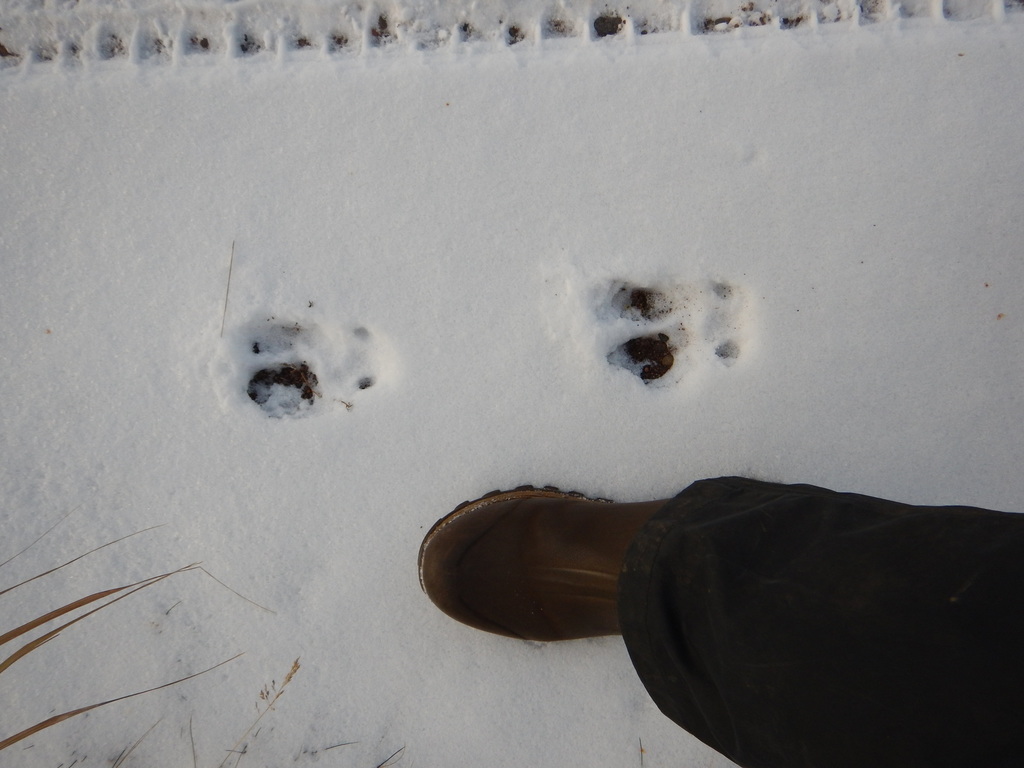Tracking : Prints
Answers to last week's track trivia!





Starting clockwise from top-left, we have squirrel, hare, deer, bobcat, and wolf.
Squirrel - Keys to ID: small size of prints, slightly oval in direction of travel
Hare - Keys to ID: four prints will be visible in each "set," but forepaws are often close together, looking like a single print. Hind paws will be larger than forepaws, and set ahead in the track set. This hare was moving from right to left.
Deer - Keys to ID: The prints of a deer are fairly distinct from non-hooved mammals. Notice the dewclaws (the two dots to the right of the print). The dewclaws will be visible in soft terrain or if the deer was running.
Bobcat - Keys to ID: Cat and dog (feline and canine) prints can look very similar. Cats will leave more circular prints, while a dog's print will be slightly oval shaped (stretched in the direction of travel). The small size of this print leads us to bobcat rather than lynx or cougar.
Wolf - Keys to ID: Come upon a wolf print and you'll have no doubt. Unless you are on a trail that domestic dogs frequently travel. The large size, presence of claws, and oval shape reveal this as a wolf track.
Simply knowing the fauna present in your region, and which species are abundant, helps narrow down your options significantly





